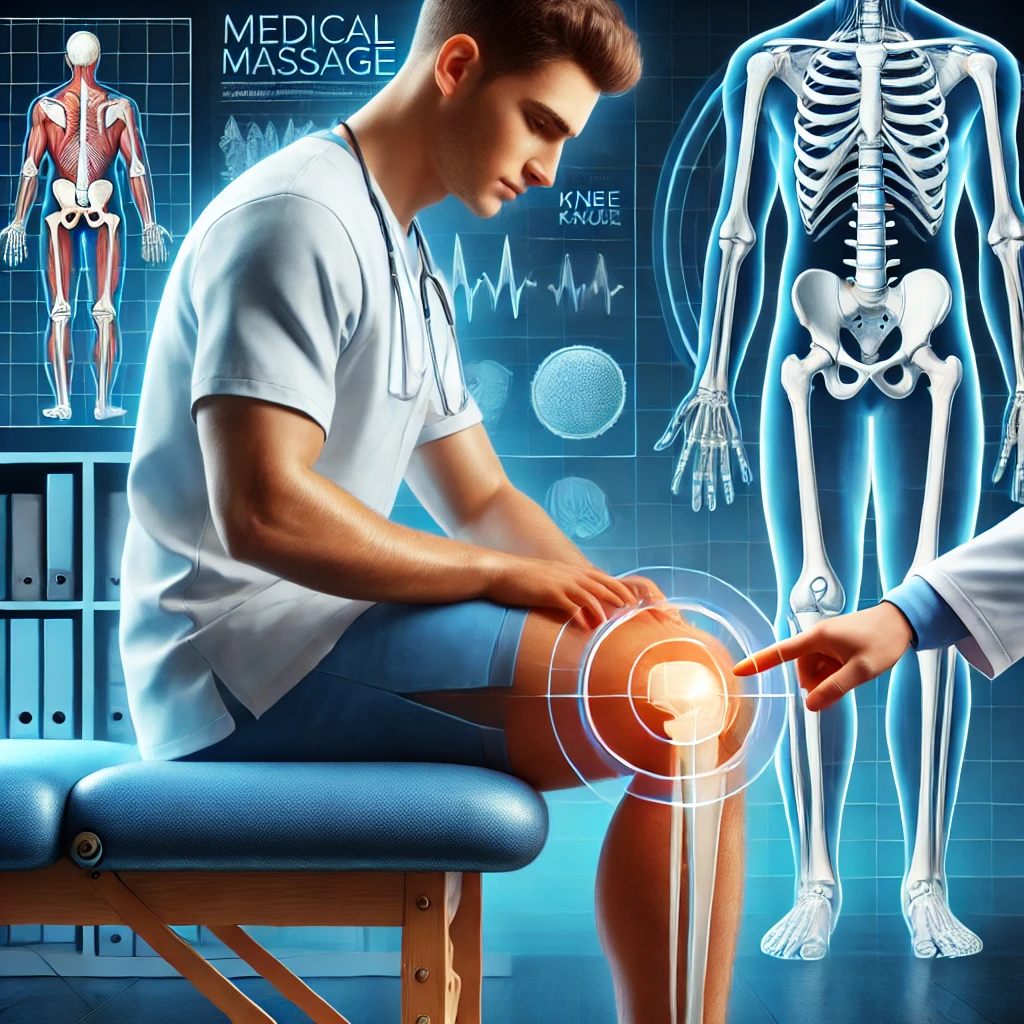
Understanding the difference between medical massage and massage therapy is crucial!
In today’s fast-paced world, many people are turning to massage as a means of achieving relaxation, relieving pain, and improving their overall health. However, not all massages are the same. Two of the most commonly discussed approaches are medical massage and massage therapy. While both can be incredibly beneficial, they differ significantly in purpose, techniques, and the conditions they address. This article will explore these distinctions to help you understand which option might be right for your needs—especially if you’re a fitness enthusiast, athlete, or someone seeking pain relief and recovery.
Understanding Massage Therapy
Massage therapy is a broad term encompassing a variety of techniques designed to relax the body, reduce stress, and enhance general well-being. It is typically performed in spas, wellness centers, or private practices by licensed massage therapists who tailor the session to the client’s needs.

Key Features of Massage Therapy
- Primary Focus:
- Massage therapy is typically focused on relaxation and stress relief.
- It also helps improve circulation, increase flexibility, and reduce muscle tension.
- Techniques Used:
- Common techniques include Swedish massage, deep tissue massage, sports massage, and trigger point therapy.
- Sports-minded individuals often benefit from sports massage, which targets specific muscle groups to enhance athletic performance and aid in recovery.
- Ideal Candidates:
- People seeking relaxation after a stressful week.
- Fitness enthusiasts who want to improve mobility or prevent injuries.
- Those looking for a non-invasive way to improve their overall wellness.
Massage therapy is generally a maintenance strategy, offering benefits that accumulate over time and contribute to long-term physical and mental health.
What is Medical Massage?
Medical massage, on the other hand, is a targeted form of therapy aimed at addressing specific medical conditions or injuries. Unlike general massage therapy, it is often prescribed by a healthcare provider as part of a treatment plan. A medical massage therapist works closely with doctors, physical therapists, or chiropractors to ensure the massage aligns with the patient’s medical needs.

Key Features of Medical Massage
- Primary Focus:
- Medical massage is designed to address specific issues, such as chronic pain, post-injury recovery, or medical conditions like sciatica or carpal tunnel syndrome.
- It focuses on restoring functionality and relieving pain caused by muscular or soft tissue dysfunctions.
- Techniques Used:
- Techniques are more specialized and may include neuromuscular therapy, myofascial release, or lymphatic drainage.
- A medical massage therapist will often focus on a single area, such as the shoulder for rotator cuff injuries or the lower back for herniated disc pain.
- Ideal Candidates:
- Athletes recovering from injuries who need targeted therapy to accelerate recovery.
- Individuals dealing with chronic pain, such as those with fibromyalgia or arthritis.
- People undergoing physical rehabilitation who need complementary treatment to improve mobility and reduce stiffness.
Medical massage is more treatment-focused, aiming to achieve measurable improvements in a person’s condition.
Key Differences Between Medical Massage and Massage Therapy
- Purpose
- Massage Therapy: Focuses on relaxation, overall well-being, and stress reduction.
- Medical Massage: Aims to address specific medical issues, often as part of a healthcare provider’s prescribed treatment plan.
- Techniques and Customization
- Massage Therapy: Employs a wide range of generalized techniques that can be adjusted to suit the client’s preferences.
- Medical Massage: Uses targeted, evidence-based techniques to address specific muscular or tissue dysfunctions.
- Settings and Collaboration
- Massage Therapy: Typically performed in spas, fitness centers, or private practices with little or no medical oversight.
- Medical Massage: Often performed in medical settings, such as clinics or rehabilitation centers, and involves collaboration with healthcare professionals.
- Insurance Coverage
- Massage Therapy: Usually not covered by insurance since it is considered a wellness or luxury service.
- Medical Massage: May be covered by insurance if prescribed by a doctor and deemed medically necessary.
- Training and Expertise
- Both require a licensed massage therapist, but a medical massage therapist often undergoes additional training to specialize in clinical applications of massage techniques.
Who Should Consider Medical Massage?
If you’re an athlete or fitness enthusiast, you may wonder whether a medical massage is a good fit for you. Here are some scenarios where seeing a medical massage therapist might be the best option:
- Sports Injuries:
- Recovering from strains, sprains, or overuse injuries like tennis elbow or runner’s knee.
- Addressing muscular imbalances caused by repetitive motions during training.
- Chronic Pain Conditions:
- If you’re dealing with conditions like sciatica, migraines, or fibromyalgia, medical massage can target the root cause of your pain.
- Post-Surgery Recovery:
- Assisting with scar tissue management and improving mobility after surgical procedures like ACL reconstruction or shoulder repairs.
- Enhanced Athletic Performance:
- Improving range of motion, muscle activation, and overall biomechanics for peak athletic performance.
By working with a medical massage therapist, you receive a tailored approach to your recovery and performance goals, ensuring better outcomes compared to a general massage.
When to Choose Massage Therapy?
For many fitness enthusiasts, massage therapy can serve as an essential tool for maintaining overall health. Some benefits include:
- Relaxation After Intense Workouts: Deep tissue massage can help release muscle tension and improve recovery time.
- Injury Prevention: Regular sessions can keep your muscles loose and reduce the risk of strains or sprains.
- Stress Relief: Balancing your physical fitness goals with mental well-being is critical for long-term success.
Massage therapy is ideal if you’re looking to integrate a regular self-care practice into your fitness routine without the need for a medical prescription.
How to Choose the Right Professional
Selecting the right practitioner depends on your goals. If you’re looking for a general approach to improve your wellness, a licensed massage therapist who specializes in Swedish, sports, or deep tissue massage may be ideal.
However, if you have specific injuries or medical conditions, it’s crucial to work with a qualified medical massage therapist who understands the clinical applications of massage and can collaborate with your healthcare team.
Questions to Ask Before Booking
- Are you certified and licensed to practice massage therapy?
- Do you specialize in medical massage or work under medical supervision?
- Have you worked with clients who have similar conditions or goals?
- Can you provide documentation or collaborate with my healthcare provider if necessary?
Combining Both Approaches
It’s worth noting that many individuals benefit from incorporating both medical massage and general massage therapy into their routines. For example:
- An athlete recovering from an ACL injury might use medical massage during the rehabilitation phase and transition to sports massage for long-term maintenance.
- Someone with chronic lower back pain could alternate between medical massage sessions to treat the condition and regular massage therapy to manage stress and prevent recurrence.
By blending these approaches, you can address immediate concerns while building a foundation for ongoing health and wellness.
The Role of a Medical Massage Therapist in Fitness and Recovery
For sports-minded individuals and fitness enthusiasts, the role of a medical massage therapist extends beyond pain relief. These professionals are skilled in understanding how the body’s muscular and soft tissue systems interact, making them valuable allies in optimizing performance and recovery.
Benefits of Medical Massage for Athletes:
- Improved Circulation: Speeds up recovery by delivering oxygen and nutrients to damaged tissues.
- Faster Recovery Times: Reduces inflammation and helps break down scar tissue.
- Enhanced Flexibility: Promotes a greater range of motion, essential for peak athletic performance.
- Injury Prevention: Identifies and corrects muscle imbalances before they lead to injury.
Whether you’re preparing for a marathon, recovering from a tough CrossFit session, or managing the demands of competitive sports, a medical massage therapist can be a game-changer in your fitness journey.
Conclusion
Understanding the difference between medical massage and massage therapy is crucial for choosing the right approach to meet your needs. While massage therapy focuses on relaxation and general well-being, medical massage is a targeted, clinical treatment designed to address specific medical conditions or injuries.
For athletes and fitness enthusiasts, integrating both practices can provide a holistic approach to recovery, injury prevention, and performance enhancement. By working with a skilled medical massage therapist, you can tackle pain and dysfunction head-on while also enjoying the long-term benefits of therapeutic massage.
Whether you’re seeking to relax after a hard workout, recover from an injury, or optimize your athletic performance, massage—whether general or medical—has the potential to enhance your physical and mental well-being.


